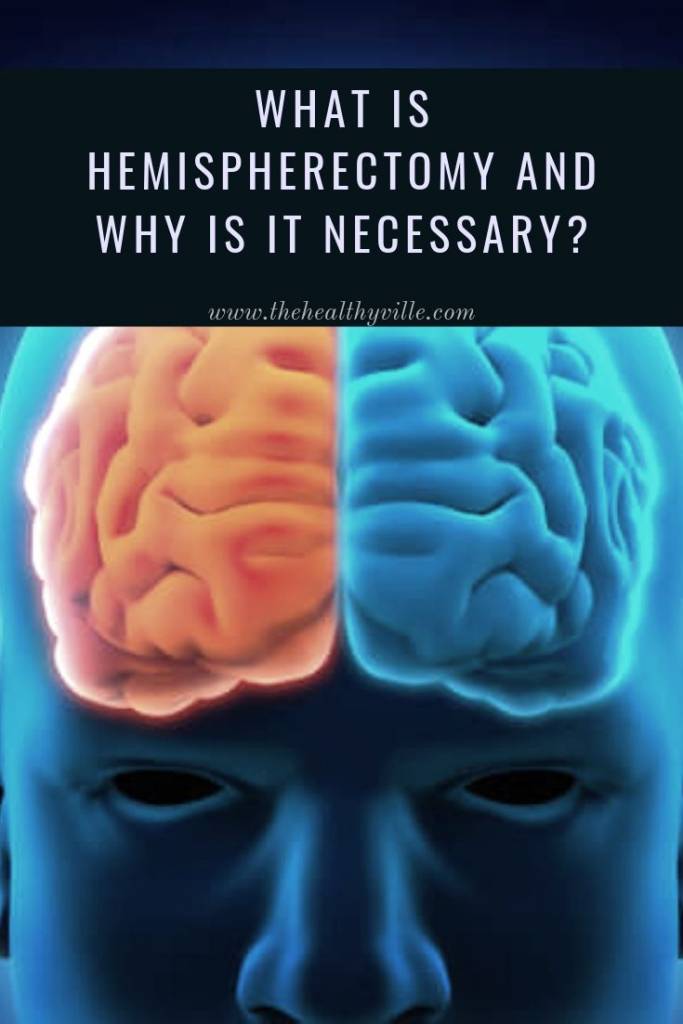The hemispherectomy is a procedure doctors use mainly for young children, as a treatment for different seizure disorders. Find out why.
The hemispherectomy is a surgical procedure doctors use to treat different seizure disorders. Doctors perform it when this kind of diseases do not respond adequately to other types of less radical treatments.
Everything indicates that the first hemispherectomy was performed on a dog in 1888. The first reference of this procedure performed on humans dates back to 1923. In the 60s and 70s several interventions of this type were performed with little encouraging results.
Currently, the functional hemispherectomy replaces the traditional one. This constitutes a more precise and somewhat less invasive intervention. The success rate is much higher than in the past.
What is hemispherectomy?
The hemispherectomy is a neurosurgical procedure that involves the removal of one of the cerebral hemispheres. Sometimes doctors remove the left hemisphere and, at other times, the right hemisphere. Doctors mainly perform it in children between 5 and 10 years old.
This type of intervention is an anti-convulsive treatment. However, it is also necessary in certain patients with neurological deficit and, exceptionally, in cases of severe head injury.
Although it is usual to remove the entire cerebral hemisphere, sometimes it is enough to remove only a part of it. When this occurs, we speak of functional hemispherectomy. In those cases, if the doctor leaves a tiny portion of the tissue, the seizure disorder may appear again.
In general terms, doctors recommend hemispherectomy to patients who present continuous and daily seizures and who have not responded to pharmacological treatment or other less invasive surgical interventions.
This surgical intervention is indicated in the following cases:
Hemiplegia in children. Only for kids older than four years who have seizure disorders, and after checking for two years that the patient does not respond to drug treatment.
Sturge-Weber syndrome. It is a neurocutaneous disorder that is characterized by a facial spot in the area of the trigeminal nerve. This happens when the crises begin at an early age and the disorder involves the entire hemisphere.
Rasmussen syndrome. It is a brain disorder that generates a chronic and progressive encephalitis. Doctors recommend an intervention as early as possible.
Hemimegalencephaly (HME). It is a rare and inflammatory neurological disease with severe seizures. The operation in these cases is still a source of debate.
Abnormalities of cortical development. Only when the hemispheric malformations are unilateral.
Read more: Natural Epilepsy Treatment – Learn How To Reduce The Seizures With A Homemade Remedy!
Characteristics of the procedure
There are four modalities of hemispherectomy, but in all of them much of the success depends on the control of hemostasis. The four modalities are:
– Anatomical
– Functional
– Modified functional
The typical procedure needs a general anesthesia. It begins with the shaving of the head and the demarcation of the incision lines. The doctor then makes the cut, exposes the dura and removes it to see the brain.
With the brain in view, the doctors mark the area that needs removal. The doctor removes it, cauterizes the blood vessels and place a drain. Then all the things that have been removed, that is, dura mater, bone and scalp, are again accommodated. The incision is sutured with staples.
Post-operative hemispherectomy
This type of postoperative period is significantly painful. The usual thing is that the drain tube stays for 3 or 4 days and then check if it is convenient to remove it. But, before removing it, it is very important to perform the diagnostic tests of the case to establish if there is bleeding.
The main immediate complications in the postoperative period are hemodynamic instability, hypothermia and hypo or hyperkalemia.
The appearance of seizures in the early postoperative period is a serious complication. Hydrocephalus occurs in about half of the cases and almost all patients develop aseptic meningitis. The mortality rate ranges between 4% and 6%.
Between 70% and 85% of patients undergoing hemispherectomy manage seizures. Around 10-20% significantly improve their quality of life. There is evidence that some complications may appear late.
Don’t forget to SHARE everything you’ve learned about this procedure with your friends and family on your social networks!

